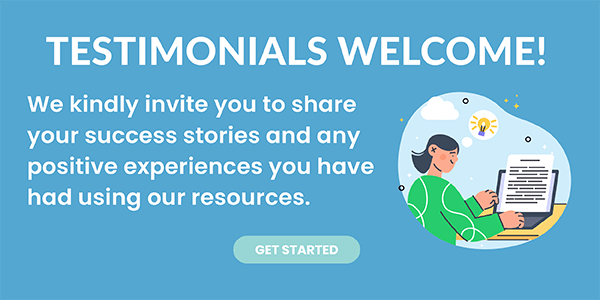Developing Students' Reading Skills

For English language learners, reading in English presents a significant challenge for several reasons. Perhaps most obviously it is simply because they lack the vocabulary range required for successful comprehension and the reading process is constantly interrupted by having to look up the meanings of unfamiliar words. Even when learners can recognize most of the words in a text, they still struggle to grasp the essential message. This often results in learners associating reading with feelings of frustration and failure and as a result, their motivation to read of their own accord diminishes. This article aims to introduce teachers to some approaches that will help make reading in English less frustrating and more interesting for students and some key concepts that underpin the reading process along with some activities that help improve students’ reading skills.
Comprehensible Input
A key concept in language acquisition put forward by Stephen Krashen, a key figure in second language acquisition theory, is comprehensible input. Comprehensible input simply means texts that can be understood by a reader even if they do not understand every word or sentence on the page. Comprehensible input is ideally just a level above the learners’ current level but still able to be mostly understood. By exposing learners to texts that consist of comprehensible input, students are able to acquire language naturally, rather than learn it consciously. The reason for this more natural acquisition is that it promotes the use of strategies such as using context to guess the meaning of unfamiliar vocabulary or making inferences. This can help ease the frustration learners experience when reading in a foreign language.
The teacher needs to keep in mind when providing opportunities for students to engage with reading texts that are considered comprehensible input that they have a good understanding of their learners’ actual level and can determine the level of the input text. Also, in a mixed levels class, the teacher should provide texts that cater to each of the various levels.
A Narrow Reading Approach
Krashen also promotes a narrow reading approach to help boost language development. This narrow approach involves reading several books by one author or several books on a single topic of interest. It is believed that narrow reading facilitates the acquisition of both structure and vocabulary by exposing students to new language in a comprehensible context. In other words, learners acquire new structures and words when they understand messages that they encode.
Some ways teachers can encourage students to adopt narrow reading are to not set high standards for themselves and only read materials that they find fun and engaging. These materials can include many forms such as comics, magazines, or romance novels. Through reading for pleasure rather than for self-improvement, students gain constant exposure to language that can prepare them for tackling more demanding texts. Students should not be too concerned about graduating to more serious or demanding texts within a certain time. It is better to move from one closely related topic or theme to another in a gradual manner. This allows students to exploit certain overlaps in language and context. Students should be choosing texts that require no self-discipline to read. Thus, if they find a text that is too difficult or uninteresting, they should choose a new text. Students must find what they read compelling.
Graded Readers
Graded readers can be used as an effective source of comprehensible input and provide an opportunity to engage in narrow reading. Graded readers are adapted versions of various authentic texts such as novels, films, biographies, or travel books. They are produced with particular reading levels in mind, with the complexity of the vocabulary and grammatical structures limited so that they are appropriate for the target level. Graded readers support the extensive reading approach to teaching English. As they are quite extensive in terms of genres and topics, students can access reading material that is not only level appropriate but also inherently interesting. Most textbook publishers produce a line of graded readers, so implementing an extensive reading program in your courses can be a practical way to help develop your students’ reading ability.
The most effective texts for learners to engage with and develop their reading ability are those that are highly interesting to the reader. The key idea here is that these texts provide optimal input for the learner. Input is considered optimal when the content is compelling or so interesting that the reader forgets that they are reading in a foreign language. This is similar to what many of us experience when we are so totally engrossed in a book that we are hardly conscious of the fact that we are reading from the page.
Bottom-up and Top-down Reading Approaches
To boost their reading ability, learners should be encouraged to use both bottom-up and top-down strategies to help them comprehend a text. For example, they can use their knowledge of prefixes and suffixes to help to guess the meaning of a new word which is bottom-up processing. Alternatively, by using their previous knowledge of a topic or theme, students can make predictions about the content of the text – top-down processing.
Bottom-up processing occurs when the reader attempts to understand a text by examining individual meanings of words or grammatical features of the most basic units of the text and moves gradually from these to try to gain an understanding of the complete text. In this understanding of the reading process, comprehension begins with individual words - their pronunciation, definitions, spelling, etc. From this, a reader’s focus gradually broadens to wider features of the text from collocations, phrases, sentences, paragraphs, and finally to understanding the complete text. Thus, the central main idea of a text can be thought of as the total of the information in each paragraph. The comprehension of each paragraph is affected by the prior understanding of each sentence which is a result of decoding each word, and so on.
As the name suggests, top-down processing is the complete opposite approach. Rather than focusing on individual words, phrases, or sentences to aid comprehension, learners attempt to speculate the content of the text and confirm or reject their predictions as they read. With top-down processing, comprehension begins with the broader aspects of a text - the title, sub-headings, the basic idea of each paragraph, etc. Later in the process, the reader focuses on smaller language features. Because of this, top-down processing is mainly associated with the activation of the reader’s prior knowledge and understanding of the topic or theme of the text. To understand a message, the reader starts by gleaning the meaning of a paragraph or larger chunks of text and later narrows their attention to the sentences and words that make up the message. As a consequence, top-down processing enables readers to comprehend more complex texts because it activates mental representations that guide the reading process. In this way, using prior knowledge and making predictions become vital components in the comprehension process. In other words, a learner’s previous experience leads the comprehension process.
Because top-down processing takes advantage of what students are already able to bring to a reading situation, it is often seen as a more effective and efficient approach. However, there seems to be some consensus that effective reading is an interaction between both bottom-up and top-down processing. Both top-down and bottom-up processes are required for students to recognize, problem-solve, and comprehend. Without bottom-up processing, learners cannot receive and process messages. However, accurate processing is not possible without the framework of prior knowledge that top-down processing helps activate.
Bottom-Up Reading Activities
A reading activity that promotes bottom-up processing and that can be used at all levels is referencing within the text. This type of activity might ask students to underline pronouns such as ‘it’ or ‘they’ or demonstratives such as ‘this’ or ‘these’ within a text and then figure out the word to which they refer. A similar activity might involve preparing a text by deleting the conjunctions and having the students complete a gap-fill by selecting suitable conjunctions. In this activity, it is recommended to ask students to justify their choice as this requires them to establish the relationship between key ideas in the text.
Activities that are more suited for lower-level learners focus on word recognition and the spelling and phonetic features of words such as the various pronunciation of the suffix -ough.
Students at a more intermediate level could engage in activities such as identifying missing words in sentences. Students at this level can also practice activities that require them to focus on paraphrasing and varied word usage in the text.
A useful type of activity for more advanced students, particularly those using English in academic settings, involves breaking down and decoding complex sentences. This may involve identifying the verb and the object and their relationship or determining the relationship between clauses through examining the use of conjunctions. Students can also be asked to identify words and phrases that show the writer’s stance towards the ideas they are communicating. This could involve making notes of reporting verbs used in the text and interpreting them such as examining the difference in meaning between the verbs ‘claim’ and ‘demonstrate’.
Top-Down Reading Activities
Prediction is perhaps the most common of the top-down reading activities. Through making predictions, readers are being asked to anticipate the content of the text which may include key concepts or answers to certain questions. This anticipation helps readers give some order to the content and recognize its significance. Prediction can be thought of as students asking questions and having them answered through their comprehension of the text. Prediction is a key element of reading as it allows readers to employ prior knowledge of places, people, and situations, and previous reading experience to predict what they will read and therefore comprehend and enjoy it.
Another common top-down reading activity is previewing. This asks students to look at titles, headings, and pictures, and read the first few paragraphs and the last paragraph. This helps students get an initial understanding of the text by activating their prior language and content knowledge before they undertake an in-depth reading.
Semantic mapping is another useful top-down reading activity that is an effective way to pre-teach vocabulary and for the teacher to ascertain the students’ prior knowledge of the topic. Semantic mapping requires students to brainstorm on the reading topic with the ideas generated being displayed as a mind map. As students make more connections to the topic, the map should evolve into a useful summary of the concepts and vocabulary that they can expect to encounter in the text. This process can also help students extend their language and content knowledge. To ensure the success of this type of activity, teachers need to be familiar enough with their students so that they are confident that the texts being selected are both familiar and interesting.
A less common but interesting top-down reading activity is reconciled reading. This reverses the standard reading sequence of students reading the text and subsequently answering comprehension questions. With reconciled reading, the teacher adapts the end of text comprehension questions and presents them to students as pre-reading questions. By doing this, students are given the opportunity to activate prior content and language knowledge.
This article has hopefully introduced you to some useful and practical ideas that you can apply in your courses to help students become more engaged and effective readers. Reading is perhaps one of the most accessible and effective vehicles for successful language acquisition outside of the classroom. Therefore, anything teachers can do to promote an interest in reading in English among students is strongly encouraged.



